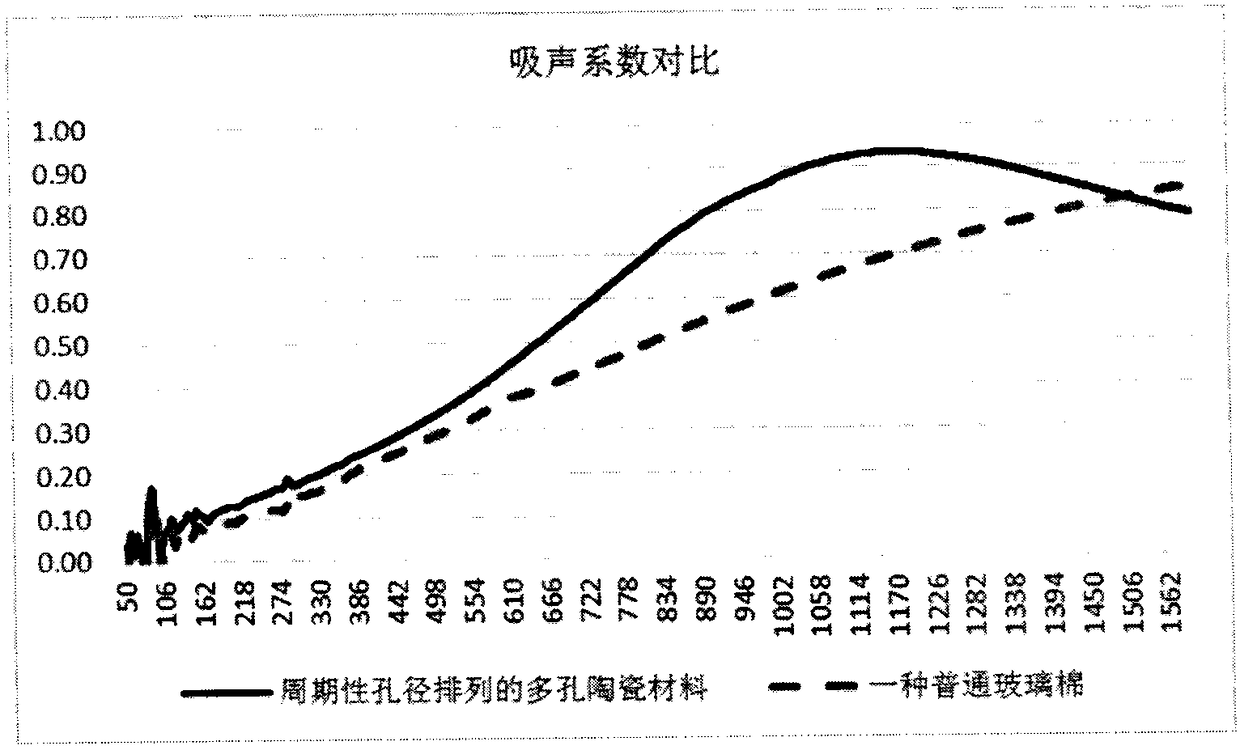Porous ceramic sound absorption material designed on basis of photonic crystal theory and production method thereof
A technology of porous ceramics and sound-absorbing materials, applied in the field of acoustic functional materials, can solve the problems of inability to realize positive design, difficult to grasp the size of voids, and low sound absorption coefficient, and achieve advanced design concepts, superior acoustic performance, and wide sources of raw materials Effect
- Summary
- Abstract
- Description
- Claims
- Application Information
AI Technical Summary
Problems solved by technology
Method used
Image
Examples
Embodiment Construction
[0027] Exemplary embodiments of the present disclosure will be described in more detail below with reference to the accompanying drawings. Although exemplary embodiments of the present disclosure are shown in the drawings, it should be understood that the present disclosure may be embodied in various forms and should not be limited by the embodiments set forth herein. Rather, these embodiments are provided for more thorough understanding of the present disclosure and to fully convey the scope of the present disclosure to those skilled in the art.
[0028] see figure 1 , a porous ceramic sound-absorbing material designed based on the theory of phononic crystals, comprising a ceramic skeleton 1 with periodically arranged micropores 2 inside the ceramic skeleton 1, and the porosity of the porous ceramic sound-absorbing material is 40%-70% %, the pore size is 0.0001--0.001m, and the flow resistance rate is 2500-12500Pa·s / m 2 , the thickness is 20mm-100mm. figure 1 The periodic ...
PUM
| Property | Measurement | Unit |
|---|---|---|
| thickness | aaaaa | aaaaa |
| porosity | aaaaa | aaaaa |
Abstract
Description
Claims
Application Information
 Login to View More
Login to View More - R&D
- Intellectual Property
- Life Sciences
- Materials
- Tech Scout
- Unparalleled Data Quality
- Higher Quality Content
- 60% Fewer Hallucinations
Browse by: Latest US Patents, China's latest patents, Technical Efficacy Thesaurus, Application Domain, Technology Topic, Popular Technical Reports.
© 2025 PatSnap. All rights reserved.Legal|Privacy policy|Modern Slavery Act Transparency Statement|Sitemap|About US| Contact US: help@patsnap.com


